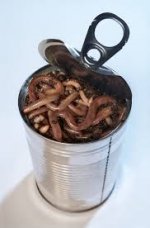UFMGuy wrote:
As a part of my 2016 updates on the GPS Fishing Guide to PA, I got some clarifications directly from PFBC that I thought I'd share.
From what I understand, the only streams closed to fishing prior to opening day are those streams listed as "Stocked Trout Waters" in the "Regulated Trout Waters" list.
If the stream's name is included in the list, then that stream is closed from headwaters to mouth. If however the listing includes a description of the upper and lower limits, then only the section between those limits in closed.
Some streams may be closed to fishing for reasons other than stocking like the "Designated Nursery Waters" listed in the Lake Erie Tributary regulations so you need to check carefully for other closures.
In general though, any stream not listed as a regulated water is regulated under Commonwealth Inland Waters and is open to fishing year round but no trout may be taken except during the "Regular Season". The are catch and release for the remainder of the year.
When it comes to wild trout, it is important to understand that Class A is not a regulation but rather a classification of the naturally reproducing trout density. This is true of Class B-D as well so the classification has no relevance to stream closures.
This year 10 streams that are traditionally stocked have been newly designated as Class A. These streams are still closed to fishing because they will continue to be stocked. Even though they are newly designated Class A streams, they retain their "Stocked Trout Waters" regulation.
I spoke to the PFBC's Coldwater Fisheries specifically about these streams to learn more and I'll summarize what I discovered.
They said, Fish Commission policy recently changed to allow streams that have been traditionally stocked and heavily fished based on angler surveys to be designated as Class A steams if they hold Class A populations of Brown or Rainbow trout. These streams can continue to be stocked as well.
Importantly, no stream previously designated as a Class A stream prior to 2015 can be stocked and also no streams designated as holding Class A Brook Trout can be stocked.
According to my source, a few more streams may become Class A n the future and will continue to be stocked but this is not going to be a significant change.
In my opinion, the policy change allows PFBC to acknowledge Class A populations in waters traditionally stocked while continuing stocking for the benefit of anglers.
If you have any questions on regulations for a specific stream or would like to verify this for yourself, I recommend you call the Regional Law Enforcement phone number which is listed at the beginning of the Summary Book.





